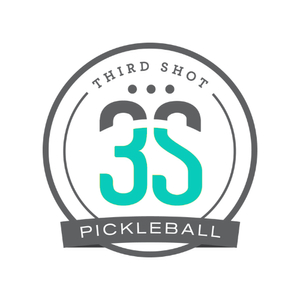We recently received a voice memo from a coach who is struggling with one of her students. Her issue was that the player had trouble varying the speed of her shots and subsequently had trouble keeping the ball and play. While we answered the question on our podcast, Pickleball Problems, I also thought it might be helpful to write about it here.
Why controlling speed matters.
Whether you are hitting a serve, return, drop, dink, or smash, controlling the speed of the ball is critical. When it comes to balls you’re hitting on a fairly straight trajectory, like a third shot drive or a return of serve, how fast you hit the ball will influence how far it travels; all things being equal, a ball that is hit faster will go farther and possibly long compared to a ball that is hit slower which may land short or even find the net.
Speed can also influence the height a ball travels. When hitting the ball on an upward trajectory, like when hitting a drop or a lob for example, the size of the arc and the height of the ball will be influenced by its speed. A ball moving upward at 10 miles an hour won’t travel as high as a ball moving upward at 30 miles an hour. This, incidentally, is often what happens when people pop up dinks or drops. It is a height issue but it’s almost always a speed issue first.
How to control speed.
There are two things that directly control how fast the ball comes off the paddle. The first is how fast the paddle itself is moving at the moment of contact. Swing faster through the ball goes faster. Have the paddle move slower through the ball, and it goes slower. Most people understand this. But there’s another factor; and that is the size of the backswing. As the paddle moves toward the ball it gathers momentum, which gets transferred at the moment of impact. A longer backswing will have more momentum associated with it when making contact, and that ball will travel faster off the paddle. With a very short backswing, even if the player accelerates quite a lot, the ball will move more slowly. Because the paddle itself has less momentum, there is less momentum transferred to the ball, and it moves slower.
This means that if you want to be good at controlling speed you have to be aware of how fast the paddle is moving at contact and how long or short the backswing is. In my experience, many people struggle with having a short backswing. So even if they feel like they’re not hitting hard the ball flies off the paddle.
A useful drill for reducing the size of the backswing is to have a player stand with their back against a fence or wall. Toss the ball to them and allow them to hit the shot forward toward you. The wall or fence will prevent them from taking a long backswing. Do this enough times that they get the feeling of having a very short backswing. Then, put them in a realistic position on the court and ask them to pretend the wall or fence is behind them. Ask them to mimic the feeling of the short backswing so they don’t hit the imaginary obstacle behind them.
Use a Wall
Hitting shots with a wall or fence behind you will force you to limit your backswing. This will make it easier to keep balls moving slower since the paddle will have less momentum at the moment of contact.
Developing a shorter backswing in order to control the speed of the ball is very much about the sensation they have. Get them used to being unable to take a long backswing and you’ll start to develop the feeling necessary for having great speed control.
Don’t get me wrong, speed control is not the only skill good pickleball players need. But how well you can control the speed of your shot will have a major impact on how likely you are to hit balls that cause trouble for your opponents, or keep you out of the danger zone. By learning to control your swing speed and the size of your backswing, you’ll be in great shape to improve the quality of your game.



